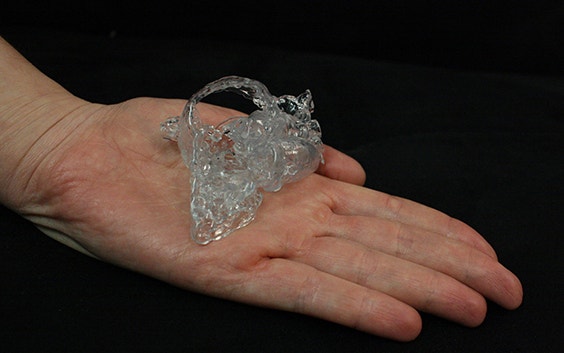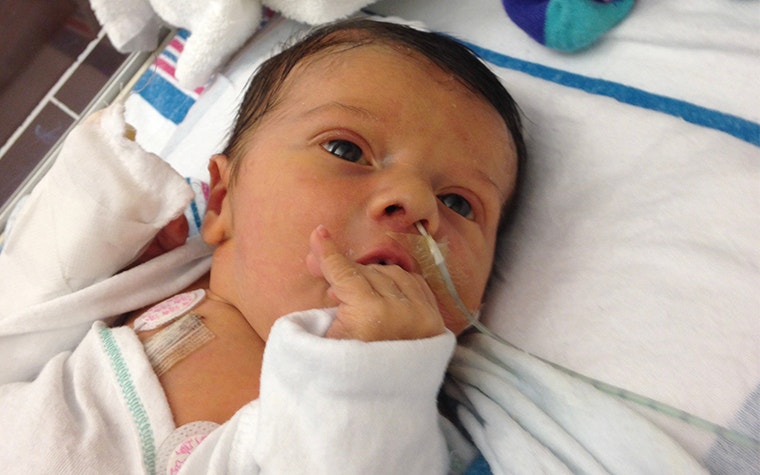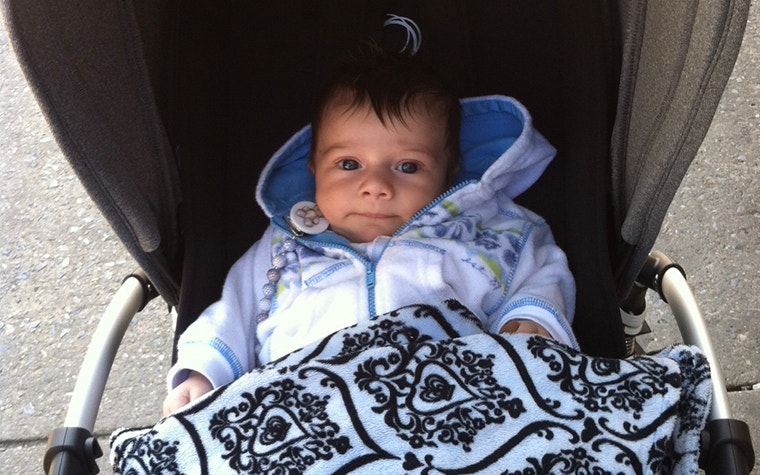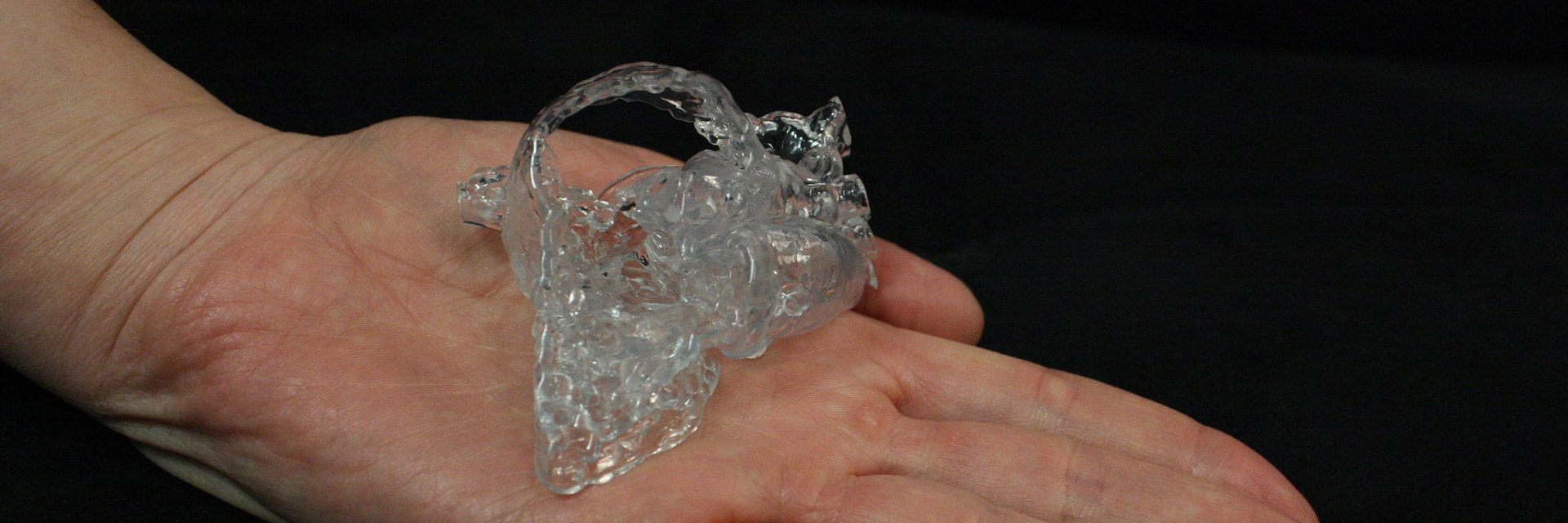CASE STUDY
Saving a Newborn with the Support of 3D Printing

To save the life of a newborn baby diagnosed with a complex form of congenital heart disease before his birth, doctors at New York-Presbyterian/Morgan Stanley Children’s Hospital in New York planned complex surgery with the support of medical 3D printing and Materialise Mimics.
The challenge
Plan and carry out life-saving heart surgery on a newborn
Finding out that you are going to have a baby may be one of the happiest days of your life. Sadly for one family in New York, the joy quickly turned to fear and uncertainty when they found out their baby would be born with a complex form of congenital heart disease in which both the aorta and pulmonary arteries arise from the right ventricle. Also present was a large hole in the heart called a ventricular septal defect (VSD).


Having already diagnosed the condition in the womb, the doctors at New York-Presbyterian/Morgan Stanley Children’s Hospital had time to plan how they would save the baby’s life before it even began with the support of medical 3D printing and Materialise Mimics.
The solution
3D-printed heart using Materialise HeartPrint
On the first day of his life, an extremely low-dose chest CT scan was acquired to better understand the complex 3D relationships of the baby’s heart and defects. However, the complex 3D relationships of the defects were not apparent from the ultrasound and scan data alone.
From the images, it was difficult for the doctors to formulate the optimal surgical plan, especially considering that the baby’s heart was no bigger than a walnut. They turned to the 3D printing experts at Materialise for a solution. A 3D model of the baby’s heart would give the team insights that were otherwise impossible to achieve outside the operating theater.
“The baby’s heart had holes, which are not uncommon with CHD, but the heart chambers were also in an unusual formation, rather like a maze,” explains Dr. Emile Bacha, a congenital heart surgeon and Director of Congenital and Pediatric Cardiac Surgery at New York-Presbyterian/Morgan Stanley Children’s Hospital.
Starting with the baby’s image data, Todd Pietila, Cardiovascular Business Development Manager at Materialise, created a 3D model of the heart using the Mimics platform.
The team at New York-Presbyterian/Morgan Stanley Children’s Hospital worked closely with Mr. Pietila to achieve an accurate reconstruction of the heart, which would allow the surgical team to best visualize the complex defect. The result was a 3D representation of the heart with the small details of the congenital defects captured accurately.
The file was then 3D printed at the medical production facility at Materialise’s US headquarters in Plymouth, Michigan. Only two days after receiving the data, a replica of the baby’s heart was delivered to the hospital.


With the 3D-printed model in hand, the team of clinicians at New York-Presbyterian/Morgan Stanley Children’s Hospital found an ideal solution for repairing all of the defects during one procedure, instead of three or four surgeries.
“In the past, we had to stop the heart and look inside to decide what to do. With this technique, it was like we had a road map to guide us,” says Dr. Bacha.
The result
Successful surgery and a bright future
Dr. Emile Bacha performed the surgery when the week-old baby weighed just over 7 lbs. His single-procedure approach allowed the baby to avoid the typical series of palliative operations, which can be life-threatening. The clinical outcome was ideal and the baby is on his way to a healthy life.
The 3D-printed heart model also allowed the surgeons to explain the baby’s condition and their plan to the worried parents. By seeing the model and understanding what needed to be done, the parents became as confident as the surgical team.
The baby’s father commented, "In [initially] discussing the necessary surgery with the doctors it was unclear how it would be performed and if it would be accomplished with one or two surgeries. We were told that they were working on getting a 3D-printed model of our son’s heart, which the team hoped would clarify the surgical plan. Upon receiving the model, everything changed.
“After studying the model, the surgeon got a clearer picture of what needed to be done and was very optimistic that he could do the repair in one surgery. Our baby was saved from subsequent surgeries and interventions and all the side effects and developmental delays that come with it. This is truly an amazing advancement in surgical planning and outcome. We are so thankful!"


The 3D-printed HeartPrint model proved to be so valuable that the clinicians at New York-Presbyterian/Morgan Stanley Children’s Hospital are already working with Materialise on additional cases.
Dr. Bacha added, “After the success of this surgery, it’s hard to imagine entering an operating room for another complex case without the aid of a 3D-printed model. It’s definitely going to be standard of care in the future and we’re happy to be leading the way.”
This content is intended for healthcare professionals only.
Share on:
This case study in a few words
Healthcare
Materialise Mimics
Materialise HeartPrint
Powerful 3D visualization
Enhanced patient communication
Preoperative planning
